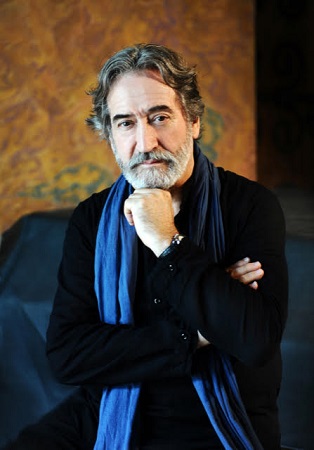 United States Various composers: Le Concert des Nations / Jordi Savall (conductor), Zankel Hall, Carnegie Hall, New York, 21.2.2019. (RP)
United States Various composers: Le Concert des Nations / Jordi Savall (conductor), Zankel Hall, Carnegie Hall, New York, 21.2.2019. (RP)

Lully – Selections from Le bourgeois gentilhomme
Sainte-Colombe – ‘Le retour’ No.41 and ‘Tombeau les regrets’ No.44 from Concert à deux violes
esgales
Anon. – ‘Une jeune fillette’
Du Caurroy – Selections from Fantasie on ‘Une jeune fillette’
Marais – Selections from Pièces de viole Books 2, 3 and 4; ‘Sonnerie de Ste-Geneviève du Mont-de-Paris’; ‘Les voix humaines’ and ‘Couplets de folies’ from Pièces de viole Book 2
Couperin – Selections from Concerts royaux
Rameau – Tambourin I and II from Pièces de clavecin en concerts, Troisième concert
Leclair – Sonata in D Major Op.2 No.8
The music of the late French Renaissance and Baroque eras was practically unknown a few decades ago. When William Christie and Les Arts Florissants presented Lully’s Atys at the Brooklyn Academy of Music in 1989, I was among the curious who flocked to see it. Two years later, Alain Corneau’s film Tous les matins du monde drew us into the world of viol da gamba master Marin Marais and his teacher Jean de Sainte-Colombe. Sainte-Colombe was simply known then as Monsieur, as his first name was only recently discovered.
The music on the film’s soundtrack, performed by Jordi Savall and Le Concert des Nations, was spellbinding. For the first time in centuries, the pungent, plaintive, biting and, at times, raucous notes of French music from the seventeenth and eighteenth centuries were heard as they might have sounded when composed. It is the music that Savall and his musicians returned to for this concert at Zankel Hall.
Four of the musicians – violinist Manfredo Kraemer, flutist Charles Zebley and Philippe Pierlot on the bass viol – have long performed with Savall. Even the youngest of the four, harpsichordist Luca Guglielmi, has played with his various ensembles for nearly twenty years. The exception was theorbist Daniel Swenberg, who was substituting for Rolf Lislevand. (Swenberg teaches at Juilliard and performs regularly with leading early music ensembles.)
In some ways the concert was the early music equivalent of a vintage rock band on tour. Once young and radical, Savall, Kraemer, Pierlot and Zebley had not only resurrected music of the past, but created an audience for it. They now stood on stage before an adoring public. The theorbo and harpsichord are indispensable to the sonorities of this music, but it was the privilege of listening to Savall, Kraemer, Zebley and Pierlot perform that made this concert so memorable.
The first half of the recital was an intimate affair. In Sainte-Colombe’s Le retour, Savall and Pierlot performed as equals, their connection with the music and one another complete. Their sense of dialogue was expanded upon in selections from Eustache Du Caurroy’s Fantasie on the French folk song ‘Une jeune fillette’. (Du Caurroy served as court composer for three kings, and his instrumental fantasias are among the earliest such pieces composed in France.) Savall and his troupe played the solo lines with an astonishing depth of expression and musical nuance. The contrapuntal sections were transparent and perfectly balanced. It resulted in a mesmerizing performance.
The first half of the program was performed with the utmost beauty and precision, but the subdued dynamic levels and the overall introspective, elegiac mood imparted a sameness to the works. That changed in the second half of the concert with the more gracious melodies and lighter textures of the music of François Couperin. In selections from his Concerts royaux, Zebley’s flute solos lent a jaunty, lilting air to the music that was echoed by Kraemer on the violin. A notch higher on the excitement scale were two tangy, jaunty dances by Rameau, the strings playing with real bite to their sound and the harpsichord trills rebounding through the hall.
After a tour de force performance by Savall and Pierlot of another Marais work, ‘Couplets de folies’, the consort turned to a piece by the late French Baroque composer Jean-Marie Leclair to conclude the concert. (Stabbed outside his home, his death remains an unsolved murder mystery.) The Sonata in D Major is a musical dialogue for two instruments with continuo. In this performance, flute and violin shared one solo line, while Savall played the other on the viol. It is elegant music, which the three masters played with unparalleled grace and refinement.
As an encore they performed ‘Bourée d’Avignonez from Recüeil de plusieurs vieux airs’, transcribed by André Danican Philidor. (He was also an expert chess player who once played the game with Benjamin Franklin.) Composed for the celebrations held at the birth of Louis XIV in 1638, the bourée was a quick two-step dance enlivened by the shrill sound of the flute and grandiose harpsichord flourishes. Any lingering lassitude from the first half had long since been dispersed by these masterful musicians.
Rick Perdian